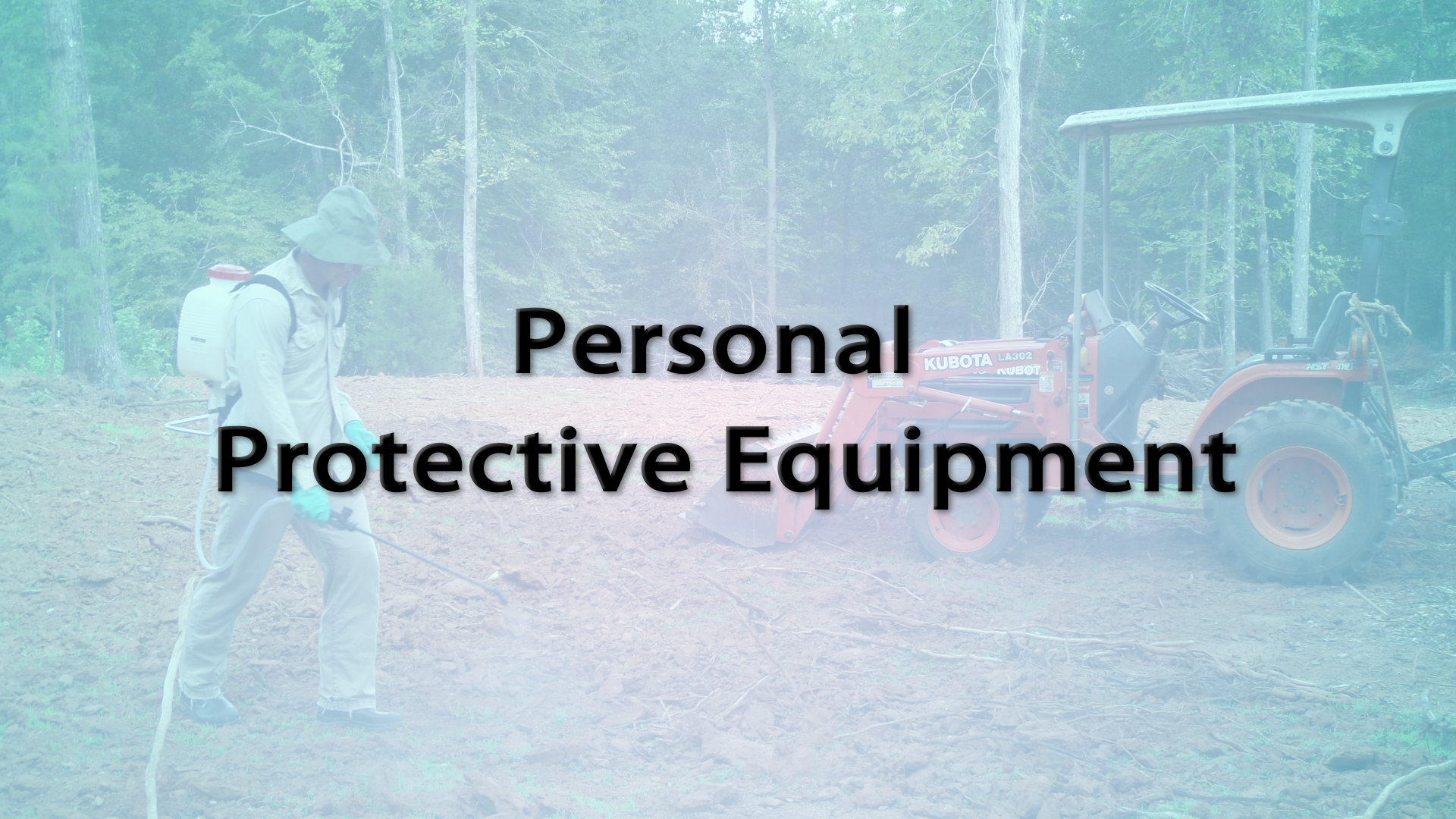Farming

1. Your first responsibility to your safety is to protect your health and well-being.
2. Wear Personal Protective Equipment, PPE for any task that could expose your skin, mouth, eyes or lungs, read the label to determine PPE Requirements.
3. “Precautionary Statements and “Agricultural Use Requirements” list what PPE an applicator, handler and early entry worker must wear. States, tribal or territorial regulatory agencies may have stricter requirements than the label.
4. All PPE is not equally protective against all pesticides. Always wear a long sleeve shirt, long pants, closed toed shoes and socks, whenever you handle or work around pesticides and their residue.
5. Some labels require coveralls; loose fitting, piece garments that cover the entire body, except head, hands and feet.
6. If a chemical resistant coverall is required, work with your PPE supplier to find the right one based on the tasks, product formulation and exposure.
7. Labels can require chemical resistant aprons when mixing or loading.
8. Apron should cover the front of the body from the middle of chest to knees.
9. Headgear protects from various types of exposure. Labels may require a chemical resistant hat with a wide brim and a hood attached to a jacket or suit.
10. Absorbent materials are not appropriate. Labels require shoes and socks.
11. Heavy duty unlined rubber boots or shoe covers provide protection. They should extend up to your knee. Make sure to wash them inside and out daily. Wear pants outside boots to prevent exposure. Use PPE and footwear only when mixing and making applications.
12. Gloves reduce exposure by 99%.
13. Labels specify glove material and thickness and sometimes solvent category. Select a durable glove that does not tear or puncture and will protect for the duration of the task. Use elbow length for mixing and loading.
14. If pesticide spills, splashes or gets inside gloves, take them off immediately, wash hands according to label, and put on new gloves.
15. Remove gloves and wash hands before driving to avoid contaminating yourself and vehicle.
16. Always rinse and slash gloves before discarding.
17. Headgear includes goggles, face shields, safety glasses with shield, or a full-face respirator. Wear goggles for a high exposure situation, such as air blast applications, applying mists, fogs or dusts.
18. A NIOSH Certified respirator protects from toxic gases, vapors, and solid or liquid particulates.
19. Respirators are manufacturer specific. Do not interchange parts, cartridges or filters. Most often required respirators are Atmosphere Supplying or Air Purifying Respirators. Supplying provide clean air from an uncontaminated source and Purifying remove contaminants from the air you breathe.
20. Particulate filters remove dusts, aerosols and sprays.
21. Users get a yearly medical evaluation to determine wearing a respirator does not endanger their health. They must also ensure proper fit of their respirators.
22. A proper fit test ensures the right size and type of respirator. Check seals using a positive pressure user seal check, cover exhalation port with palm and lightly exhale into mask. You will feel air escaping through gaps in seal. Conduct a negative pressure user seal check by covering the surface or hole that air is inhaled or sucked in from. When sealed it should collapse towards your face.
23. When cleaning PPE, take outdoors and shake. Wash separately from other laundry. Do not overfill the load. A few items at a time allows adequate agitation and water for dilution. Use hot water, highest water level, a heavy-duty liquid detergent. Run the longest wash cycle. Some items may need two wash cycles or to be discarded. Line dry items outdoors if possible, or dry on high heat. Run an empty wash cycle using detergent and hot water to clean the machine before re-use.
24. Coveralls can be disposable or reusable. For reusable check the manufacturers use limitations and laundering instructions. Replace frequently and discard according to regulations.
25. Disposable need to be slashed and discarded appropriately. If necessary you may need to take them to a hazardous waste facility for proper disposal.
26. Clean boots and gloves after every use. Before removing gloves, wash them thoroughly. Once removed wash gloves inside and out. Inspect for wear and tear. Discard damaged gloves. Hang or leave them to dry. Store rubber materials away from the sun. It will degrade them. Gloves should be replaced often to avoid break down. If properly cared for boots can last for several seasons.
27. Eye-wear, respirator bodies, face-piece, and helmets are designed to be cleaned and reused.
28. Respirators require maintenance. Remove properly and dispose of expendable components, filters, cartridges, or canisters. Wash the face-piece according to the manufacturer’s directions. Clean under and around gaskets and valves. Air dry and store the clean item, along with replacement items in a dry place. Do not exposed to sunlight or extreme temperatures. Make sure the face-piece is not distorted when stored so it maintains its shape.

